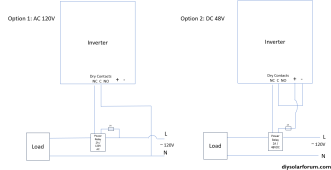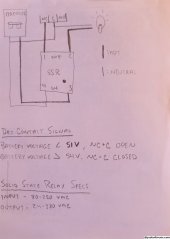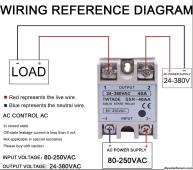Does anyone knows how the dry contact works on LV6548 or 6500EX. The manual says that it is 250VAC 3A. I dont know what this means, is this 250VAC supplied voltage by the dry contacts or do I need to supply the voltage to it from another source, for example the inverter output?
Can I run a relay of these contacts to energize a dump load when batteries are full?
Can I run a relay of these contacts to energize a dump load when batteries are full?









